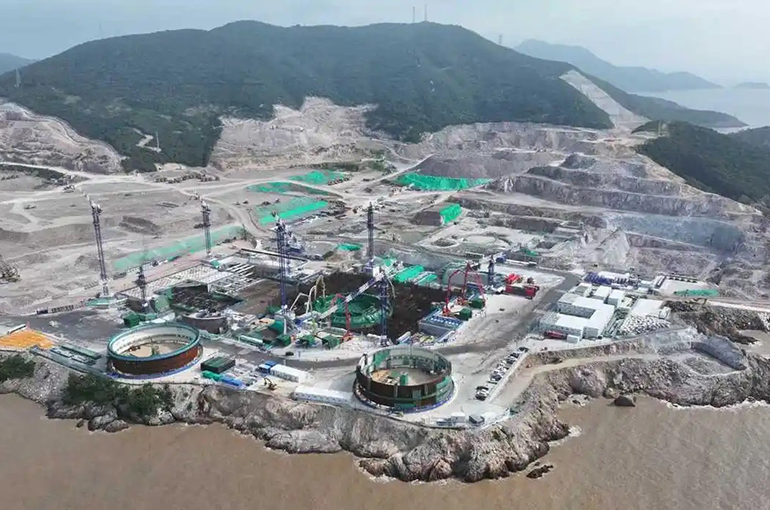 China Starts Building Fourth Nuclear Plant in Zhejiang Province
China Starts Building Fourth Nuclear Plant in Zhejiang Province(Yicai) Aug. 11 -- Construction work on the fourth nuclear power plant in China's eastern Zhejiang province has begun, with the project aimed at boosting the region's energy self-sufficiency and accelerating its energy transition.
Concreting work on the first reactor of the Jinqimen Nuclear Power Plant in Ningbo started today, state-owned China National Nuclear Corporation said on the same day, adding that its subsidiary China National Nuclear Power invested in the project and plans to build six Hualong One units, each with installed capacity of 1.2 million kilowatts and cable of running for 60 years.
Hualong One, also known as HPR1000, is a third-generation pressurized water reactor technology jointly developed by CNNC and China General Nuclear Power Group.
The plant is expected to generate 55 billion kilowatt hours of electricity per year once fully operational, equivalent to half of Ningbo's electricity consumption last year, CNNC pointed out. In addition, it will likely reduce annual carbon dioxide emissions by about 45 million tons.
Zhejiang, China's fourth-largest provincial economy, has a huge energy demand but lacks fossil resources. It has had to rely on external electricity transport for a long time, so it vigorously develops nuclear power using its coastal geographical advantages to change this.
The Qinshan Nuclear Power Plant with nine reactors is already running in Zhejiang, while two more plants with six units each are being built in Sanmen and Sanao.
China has been accelerating the development of nuclear power to replace fossil fuels to achieve its goal of carbon neutrality, having 58 reactors in operation as of Dec. 31, ranking second in the world only behind the United States with 94 units, according to official figures. The Asian country is also building 27 new reactors, ranking top by units under construction for 18 straight years.
Editor: Martin Kadiev